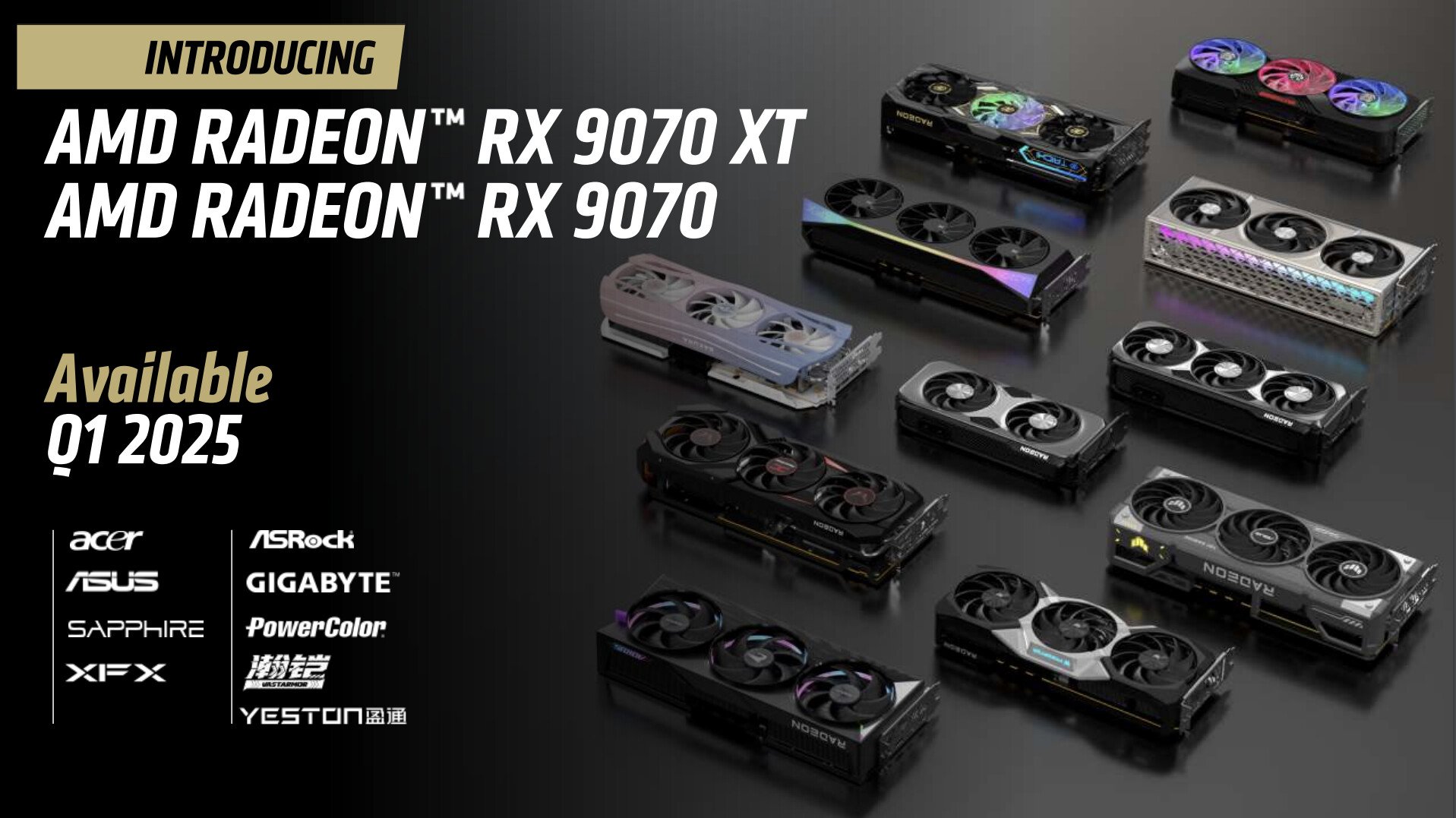
AMD Reveals Radeon RX 9070 XT and 9070 with FSR 4 and Ray-Tracing to Challenge NVIDIA at CES 2025
At CES 2025, AMD took the spotlight with a significant announcement in the world of graphics cards. The company introduced its next-generation Radeon RX 9070 XT and 9070 series, powered by the RDNA4 architecture. These new graphics cards are a direct response to NVIDIA's advancements in gaming and performance, promising improved ray tracing and the introduction of FidelityFX Super Resolution 4 (FSR 4). With these updates, AMD is aiming to catch up with its fierce competitor and improve its standing in the graphics card market.
The year 2024 had seen some tension in the graphics card industry. On one side, AMD had its Radeon 7000 series, which excelled in rasterized performance but fell short in ray-tracing capabilities. On the other hand, NVIDIA had focused heavily on its software advancements, such as frame generation and DLSS 3.5, without making enough progress in hardware development. The Radeon RX 9070 series, however, signals that AMD is acknowledging the importance of ray tracing and AI-driven technologies, drawing inspiration from NVIDIA’s latest innovations.
Notably, AMD skipped over the Radeon RX 8000 naming scheme, opting instead for the RX 9000 series. The RX 9070 XT and 9070 are aimed at competing directly with NVIDIA's RTX 4070 Ti and 4070 SUPER. By aligning the naming with NVIDIA's trends, AMD is streamlining its branding and providing consumers with a clearer distinction between the latest generations of CPUs and GPUs.
Also Read:- Character.ai: Is it Safe for Young Users?
- Prison Officer Linda De Sousa Abreu Jailed After Sex with Inmate Captured on Video
A standout feature of the Radeon RX 9070 series is the integration of FSR 4, an AI-driven upscaling technology that aims to deliver significantly improved 4K image quality. This new version of FidelityFX Super Resolution leverages machine learning to upscale graphics without compromising on visual fidelity, which is crucial for gamers looking to achieve high-quality visuals at ultra-high resolutions. Additionally, FSR 4 includes Frame Generation, a technology introduced with FSR 3, which reduces latency while enhancing frame rates.
However, FSR 4 isn’t available for every AMD graphics card. The technology is exclusive to the RDNA4 architecture and is therefore limited to the RX 9070 series. This means that older Radeon models, such as the RX 8000 series, won't be able to utilize these enhancements. For enthusiasts hoping to benefit from FSR 4, this may feel limiting, but AMD’s intention is clear: the latest advancements are designed to take full advantage of the hardware features in the RDNA4-based cards.
Along with the performance improvements in upscaling, the RX 9070 XT and 9070 also promise better ray-tracing capabilities. Even the previous generation’s Radeon 7900 XTX was left behind by NVIDIA’s RTX 4070 in ray-tracing performance, but AMD is focusing on improving this aspect to ensure the 9070 series can hold its own in the increasingly ray-tracing-intensive gaming landscape. This is particularly important for upcoming games like "Indiana Jones and the Ancient Circle," which demand powerful GPUs with robust ray-tracing features.
The new Radeon RX 9070 series cards are expected to be available in the first quarter of 2025, with several well-known partners such as Acer, ASUS, and Gigabyte providing various custom models. These will include different color options and overclocked versions, typical of AMD’s GPU launches.
While AMD has made notable strides with the RX 9070 series, it is still positioning these graphics cards against NVIDIA’s RTX 4070 Ti and 4070 SUPER, leaving out any direct competition with the upcoming RTX 5000 series. This suggests that AMD’s primary goal for CES 2025 is to address past shortcomings and bridge the performance gap, rather than engage in a head-to-head battle with NVIDIA’s next-gen cards.
So, the Radeon RX 9070 XT and 9070’s unveiling at CES 2025 marks an important step for AMD as it looks to refine its graphics card offerings. With FSR 4, ray tracing improvements, and better AI integration, these cards are set to offer significant performance upgrades for gamers, though the competition with NVIDIA is still far from over. Time will tell if AMD’s new cards can truly challenge NVIDIA’s dominance in the GPU market.
Read More:

0 Comments